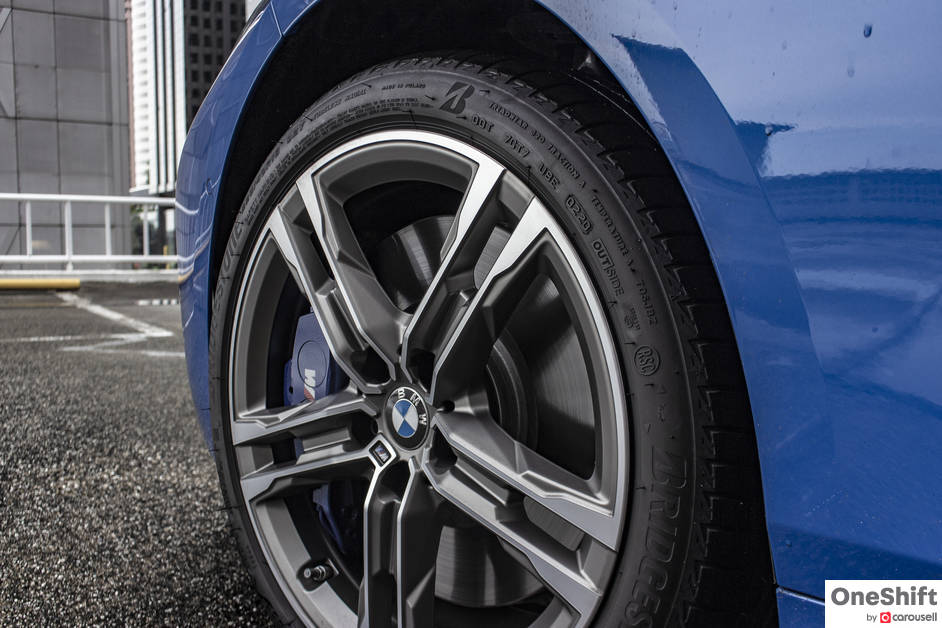The Ultimate Wheel And Tyre Buying Guide : Buy Your Next Set of Wheels With Confidence
Wheels and tyres are one of the most commonly replaced parts on a car, yet also one of the most neglected and overlooked parts of the car. When done right, they can do wonders in enhancing the ride quality and safety of your vehicle. When done wrongly, they can be dangerous and have implications on your insurance.

Tyres are one of the most commonly replaced and upgraded parts on a car, but yet also one of the most overlooked and neglected aspects of the car ownership experience. It is a wonder why the topic is so severely unexplored and poorly understood though - After all, tyres are pretty much the only thing holding you and your car to the safety of the road. Personally, I’d say that tyres and wheels are just as important as any other component of your car, if not the most important. Seeing as they are as important as they are, I thought it might be good to dive a little deeper into the topic of tyre and wheel management as part of the car ownership experience.
To start things off, it's common knowledge that tyres come in a multitude of different sizes, and depending on the make and model of the car your driving. Even on the same car, there is actually a range of applicable wheel sizes that stipulate the minimum and maximum wheel size that your car can safely accommodate without requiring any supporting hardware changes. For e.g. Some cars can physically accommodate a larger than specified wheel size, but can only be safely accommodated if there is an upgrade to the brake kits on the car. Keep in mind, that fitting the wrong tyre size isn’t just about personal choice - It also has implications on your insurance should you be unfortunate enough to get into an accident. During a post accident insurance survey, one of the very first things your surveyor is going to check are the specifications on your tyres. If you have fitted an inappropriate tyre to your car, it could possibly void your insurance and any coverage that it would originally entitle you to.

And don’t think for a second that this scenario could possibly only apply to people who are upgrading to large and sporty sets of wheels and tyres. This could happen even to regular sized tyres on normal everyday cars. There are about 3-5 key specifications that can be found on a consumer car wheel and tyre, and if any one of these specifications are out of place and not within the tolerable standards, the same thing could happen to you. I’ve encountered a good amount of people who weren’t trying to do anything funny with their wheel and tyre setup, and simply trusted their tyre shops to fit on appropriate sets of tyres for them. Turns out, their respective tyre shops actually put on the wrong set of tyres for them. When considering each car’s appropriate tyre size, specifications, and recommended air pressure and pasted on the inside of the driver’s door panel, such mistakes are really not acceptable, and can land consumers like you and me in hot soup when faced with an insurance claim.
Wheel sizes and tyre specifications are there, so that when a driver decides to say upgrade their wheels to a bigger size, they know exactly what the acceptable change is. The objective of these size conversions is to more or less allow the new tyre to possess a similar mass and diameter to the previous tyre that they were upgrading from. This is done so that your speedometer and odometer readings are not affected, and also so that there are minimal implications to the functionality of your existing brake and suspension kits. The three main specifications that govern tyre equivalence are the tyre width, tyre sidewall height, and the wheel / rim size. These are normally presented in this manner - for e.g. 225 / 50 / R17. These specifications should always be the first order of business when selecting your tyres and you should never differ from the manufacturer’s specifications on this.

Another 2 specifications that are important to consider, especially when upgrading your wheels, are the wheel specifications. The first is the width of your wheel, and the second is the offset. Generally, most cars can accept a variety of width specifications, but it should be noted that each particular width can accommodate tyre widths spanning a 30mm range. So if you are putting on tyres that are unusually broad or skinny, be sure to double check that you have the right wheels for the job. When it comes to offset, it gets a little bit complicated - But the long story short is that each individual car make and model has a range of acceptable wheel offsets that the wheel hub can accommodate safely, without your tyres protruding outside of the wheel hub, or rubbing up inside of the wheel hub. Offset is demarcated by a wheel specification in millimeters. For e.g. ET40, which essentially means that the distance between the centre of the width of the wheel is 40mm from the mounting surface of the wheel. The smaller the number, the closer the mounting surface is to the centre of the width of the wheel. In layman terms, this means that the design of the wheel is likely one that is concave as opposed to flat when viewed from outside. Long story short, find out what your car’s acceptable offset range should be, and stick to it, or you might find yourself on the wrong side of driving an unsafe vehicle.
Previously, tyres could usually only be purchased at a tyre store. Today however, you can find plenty of online sources that are able to sell and deliver tyres and wheels to you. As such, it is important to know what you are doing when purchasing tyres and wheels online. If you are not intimately familiar with tyre fitment and concepts like tyre equivalence, it is highly recommended that you do things the traditional way and purchase your tyres at a physical store.

One key thing that you should always pay attention to on a tyre is the DOT or manufacture date. Unfortunately, this information isn’t usually available on online sales channels, and you’ll probably want to verify this physically as well. This is usually presented by 4 digits, for e.g. 2820 which means that the tyre was manufactured on the 28th week of the year 2020. As a general rule of thumb, it is recommended not to purchase tyres more than 18 months after manufacture. Some people accept tyres up to 24 months after manufacture (though this is probably the reasonable limit). There aren’t any rules against buying older discount tyres, but do take note that the rubber compound on older tyres have a higher chance of being compromised and are more prone to issues like blistering, especially after being stored in damp and humid conditions that are prevalent in Singapore.
There is somehow this assumption that tyres do not have a “best before” date, when really, they do. As such, it is important for you to consider that when you see extremely cheap tyres online, they could be so for two reasons. First, they could be tyres with a very old manufacture date, and are likely past their prime in terms of function and performance. This is something you should be wary of. Even with newly manufactured tyres, it is recommended that you leave them on your car for a maximum of 2.5 years, even if they aren’t worn out yet. The reason for this is that tyres are made of rubber, and rubber degrades over time. So imagine buying a tyre that has already been sitting around for 2 years, before you slap them on for another 2 years.

Another reason why tyres might be cheap is because there are certain tyre stores in Singapore that specialise in fitting certain highly popular tyre models, and as such, directly bring in these tyres by the container load - This brings me to my next point. When fitting tyres, you should understand the type of tyres you are trying to fit, and therefore the type of establishment you should go to. Ultra High Performance Tyres or Premium Touring Tyres might not be the bread and butter of your neighbourhood style tyre stores, who might specialise more in low cost tyres for Private Hire Vehicles, or commercial vehicles. In such a situation, they won't have much turnover for the premium tyres you seek. This means that you are either getting an older tyre than you might otherwise get elsewhere, or you’ll be paying more for it as your seller may not have the economies of scale that other tyre shops do. Conversely, if you are looking for cheaper tyres on a budget, then you will want to stay away from performance tyre stores who might not even have what you are looking for in stock.
Shopping for new wheels and tyres? Check out these online listings for both new and used wheels and tyres today.
Credits:


Get the Best Price for your used car
from 500+ dealers in 24 hours

- Convenient and Hassle-Free
- Consumer Protection
Transparent Process
With No Obligation








